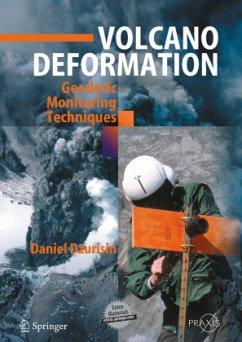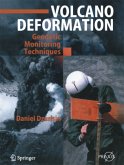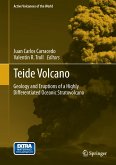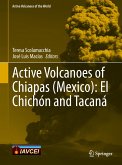This book describes the techniques used by volcanologists to successfully predict several recent volcanic eruptions by combining information from various scientific disciplines, including geodetic techniques. Many recent developments in the use of state-of-the-art and emerging techniques, including Global Positioning System and Synthetic Aperture Radar Interferometry, mean that most books on volcanology are out of date, and this book includes chapters devoted entirely to these two techniques.
Volcanoes and eruptions are dramatic surface man telemetry and processing, and volcano-deformation ifestations of dynamic processes within the Earth, source models over the past three decades. There has mostly but not exclusively localized along the been a virtual explosion of volcano-geodesy studies boundaries of Earth's relentlessly shifting tectonic and in the modeling and interpretation of ground plates. Anyone who has witnessed volcanic activity deformation data. Nonetheless, other than selective, has to be impressed by the variety and complexity of brief summaries in journal articles and general visible eruptive phenomena. Equally complex, works on volcano-monitoring and hazards mitiga however, if not even more so, are the geophysical, tion (e. g. , UNESCO, 1972; Agnew, 1986; Scarpa geochemical, and hydrothermal processes that occur and Tilling, 1996), a modern, comprehensive treat underground - commonly undetectable by the ment of volcano geodesy and its applications was human senses - before, during, and after eruptions. non-existent, until now. Experience at volcanoes worldwide has shown that, In the mid-1990s, when Daniel Dzurisin (DZ to at volcanoes with adequate instrumental monitor friends and colleagues) was serving as the Scientist ing, nearly all eruptions are preceded and accom in-Charge of the USGS Cascades Volcano Observa panied by measurable changes in the physical and tory (CVO), I first learned of his dream to write a (or) chemical state of the volcanic system. While book on volcano geodesy.
Hinweis: Dieser Artikel kann nur an eine deutsche Lieferadresse ausgeliefert werden.
Volcanoes and eruptions are dramatic surface man telemetry and processing, and volcano-deformation ifestations of dynamic processes within the Earth, source models over the past three decades. There has mostly but not exclusively localized along the been a virtual explosion of volcano-geodesy studies boundaries of Earth's relentlessly shifting tectonic and in the modeling and interpretation of ground plates. Anyone who has witnessed volcanic activity deformation data. Nonetheless, other than selective, has to be impressed by the variety and complexity of brief summaries in journal articles and general visible eruptive phenomena. Equally complex, works on volcano-monitoring and hazards mitiga however, if not even more so, are the geophysical, tion (e. g. , UNESCO, 1972; Agnew, 1986; Scarpa geochemical, and hydrothermal processes that occur and Tilling, 1996), a modern, comprehensive treat underground - commonly undetectable by the ment of volcano geodesy and its applications was human senses - before, during, and after eruptions. non-existent, until now. Experience at volcanoes worldwide has shown that, In the mid-1990s, when Daniel Dzurisin (DZ to at volcanoes with adequate instrumental monitor friends and colleagues) was serving as the Scientist ing, nearly all eruptions are preceded and accom in-Charge of the USGS Cascades Volcano Observa panied by measurable changes in the physical and tory (CVO), I first learned of his dream to write a (or) chemical state of the volcanic system. While book on volcano geodesy.
Hinweis: Dieser Artikel kann nur an eine deutsche Lieferadresse ausgeliefert werden.
From the reviews:
"This monumental, first-of-a-kind, up-to-date book on volcano geodesy compiled by Dzurisin ... fills an important gap in the rapidly expanding literature discussing the young science of Volcanology. ... The outstanding list of references offers more than 400 citations; the extra material contains all the book's figures plus an expanded version of analytical source models. ... The chapter authors are eminently qualified, and their book is a marvelous contribution to the highly complex, important, and challenging profession of volcano monitoring. Summing Up: Highly recommended." (T. L. T. Grose, CHOICE, Vol. 44 (11), July, 2007)
"This monumental, first-of-a-kind, up-to-date book on volcano geodesy compiled by Dzurisin ... fills an important gap in the rapidly expanding literature discussing the young science of Volcanology. ... The outstanding list of references offers more than 400 citations; the extra material contains all the book's figures plus an expanded version of analytical source models. ... The chapter authors are eminently qualified, and their book is a marvelous contribution to the highly complex, important, and challenging profession of volcano monitoring. Summing Up: Highly recommended." (T. L. T. Grose, CHOICE, Vol. 44 (11), July, 2007)








